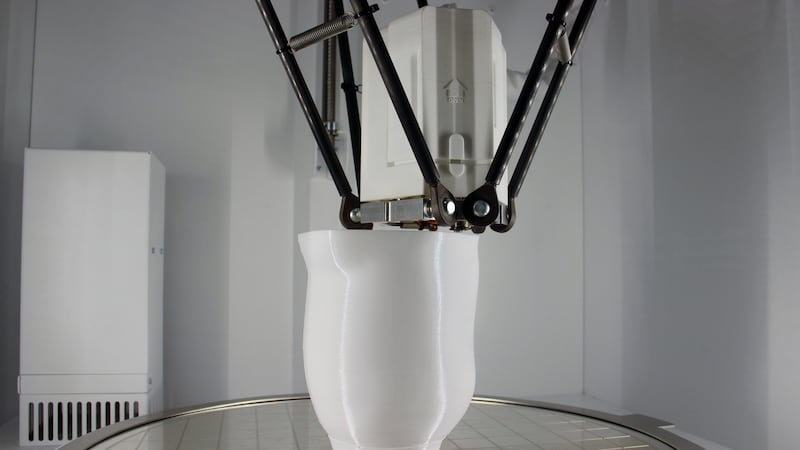Hussein Qabani from the citadel district of Aleppo was just 14 when a Syrian regime-made barrel bomb was dropped on his neighbourhood. "It exploded near to my house and I ran there to try to help the injured people," he says from a clinic in Istanbul.
"After a few minutes, another one was dropped and boom," he makes an explosion gesture with his hands, and wears a slight grin hiding the untold horrors of his short past. Hussein's right leg was blown clean off in the blast, known as a double-tap attack, in which government forces from a helicopter drop a second bomb on the responders gathered to help victims of the initial bombing.
“I stayed in Aleppo after the bombing for 1½ years. But I had to regularly go to the regime-controlled side of the city for treatment,” he says.
As the eldest son, it fell on Hussein to go out and find work to help support his family. But with eastern Aleppo in ruins and regime soldiers closing in, he and his two siblings fled to Turkey in 2015. Air strikes and shelling have taken thousands of Syrian lives and left behind thousands more with mangled bodies and shattered limbs.
Artificial limbs
International medical groups report that more than 80,000 people in Syria are in need of prosthesis or orthosis devices, medical support that has long been expensive and thus difficult to get to those most in need.
Now, on this warm summer morning, Hussein has come to a prosthesis centre in Istanbul’s Edirnekapi district that’s using groundbreaking technology to help establish a better life for amputee victims of Syria’s war.
Hussein’s past experiences with prosthesis have not been positive. “A year ago, I got a prosthetic leg but it was a cheap model, it wasn’t good and wouldn’t fit properly,” he says. “But I started fitting this one three weeks ago and I’m excited to see and try it. It seems to fit a lot better.”

His new model has been crafted from cutting-edge, 3D-printing technology. A 3D scanning machine takes precise limb measurements of the amputees’ residual limb and, within five hours, 3D-printed prosthetics are ready for fitting. “If it helps me find work, helps me walk, I’ll be more comfortable.”
The centre is run by the Humanitarian Relief Foundation (IHH), a conservative and sometimes controversial Turkish group, in co-operation with the Alliance of International Doctors (AID), a voluntary group of doctors and medical staff based in Istanbul. It opened in April within walking distance of a large Syrian community, and hopes to change the lives of Syrian amputees by using this cheap, revolutionary technology, one that is likely to soon appear in war zones around the world.
The limbs are manufactured from light-weight polycarbonate or organic-made PLA (polylactic acid) that can be produced from inexpensive plastic waste materials such as pellets. In a basement laboratory next door to the clinic, drills, saws and clamps litter workstations used by technicians fine-tuning the 3D-printed limbs.
Plastic compound
A German-made 3D printer slowly moulds a socket piece that is named “Esalih”, after its soon-to-be owner, from a molten plastic compound at a temperature of 320 degrees. The laboratory staff focus mostly on making the sockets that connect the residual with the prosthetic limb, but it has also started experimenting with manufacturing prosthetic legs. IHH and AID say they expect to serve about 1,000 war victims at its two clinics in Turkey in the next two years.
The benefits of producing 3D-printed limbs are numerous. Whereas conventional prosthetic devices have a lifespan of no more than five years and can cost tens of thousands of euro, putting them beyond the reach of many Syrian and other war victims, a typical 3D-printed prosthetic leg costs less than €100 to make.
The technology has the potential to change the lives of millions of amputees in active and latent conflict zones across the globe. Soon, mobile 3D scanning devices, light and small enough to take behind enemy lines, will be able to reach anywhere bombs are dropped; their low cost and versatility could revolutionise the nature of emergency medical relief even as the war itself drags on.
"It is fast and our technicians can go to [IDP and refugee] camps or war zones, and get the specifics from people there. And we can do this all in one day," says Busra Buyukdere, a biomedical engineer at AID.
"The most difficult part of the process," says Dr Yasar Tatar, as he works on shaping a prosthetic leg, " is that patients don't arrive on time. But the reality is that surgeries that take place in war zones are difficult, and the physical area on the residual arm or leg is rarely properly operated on in the field."










